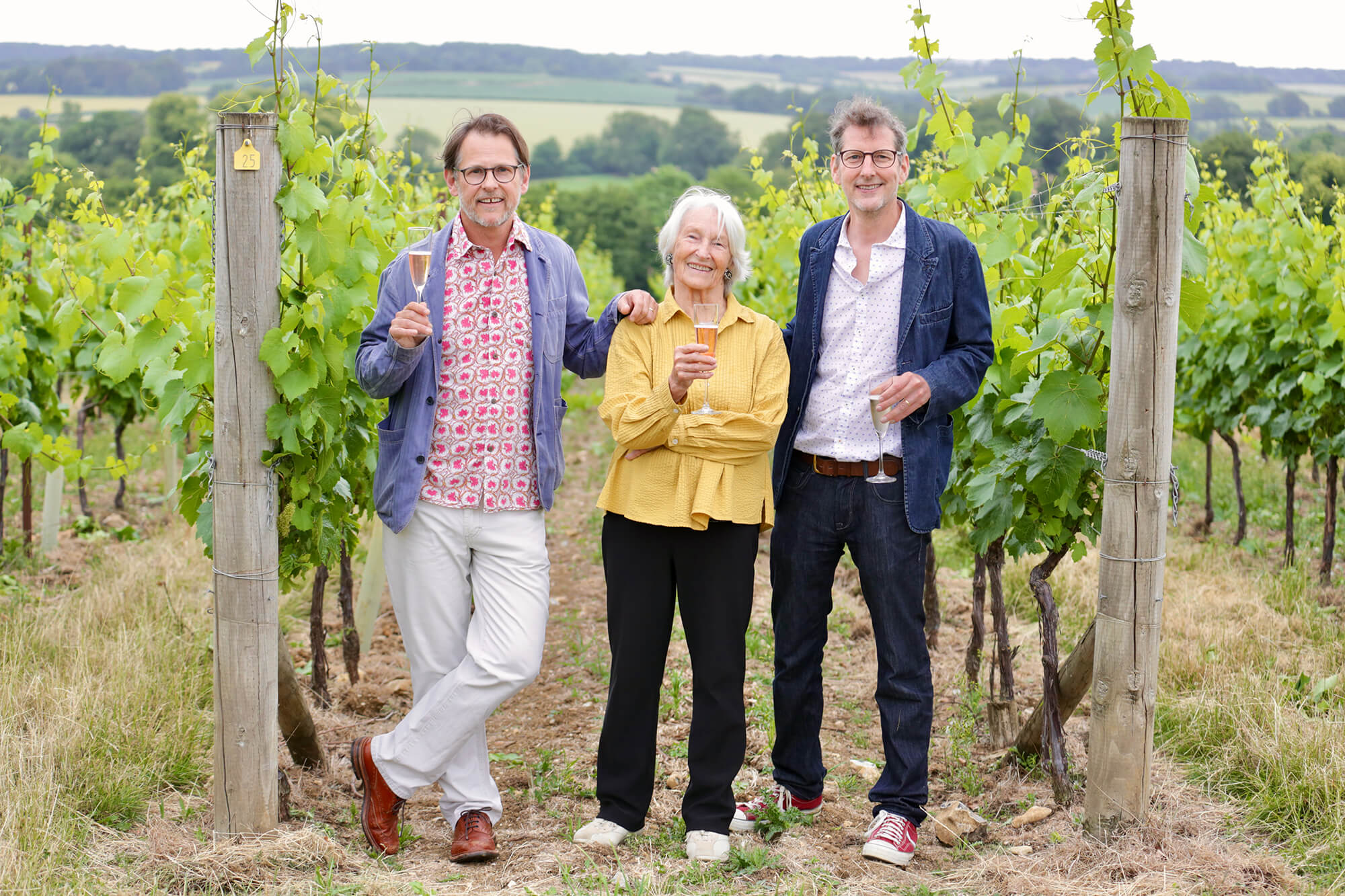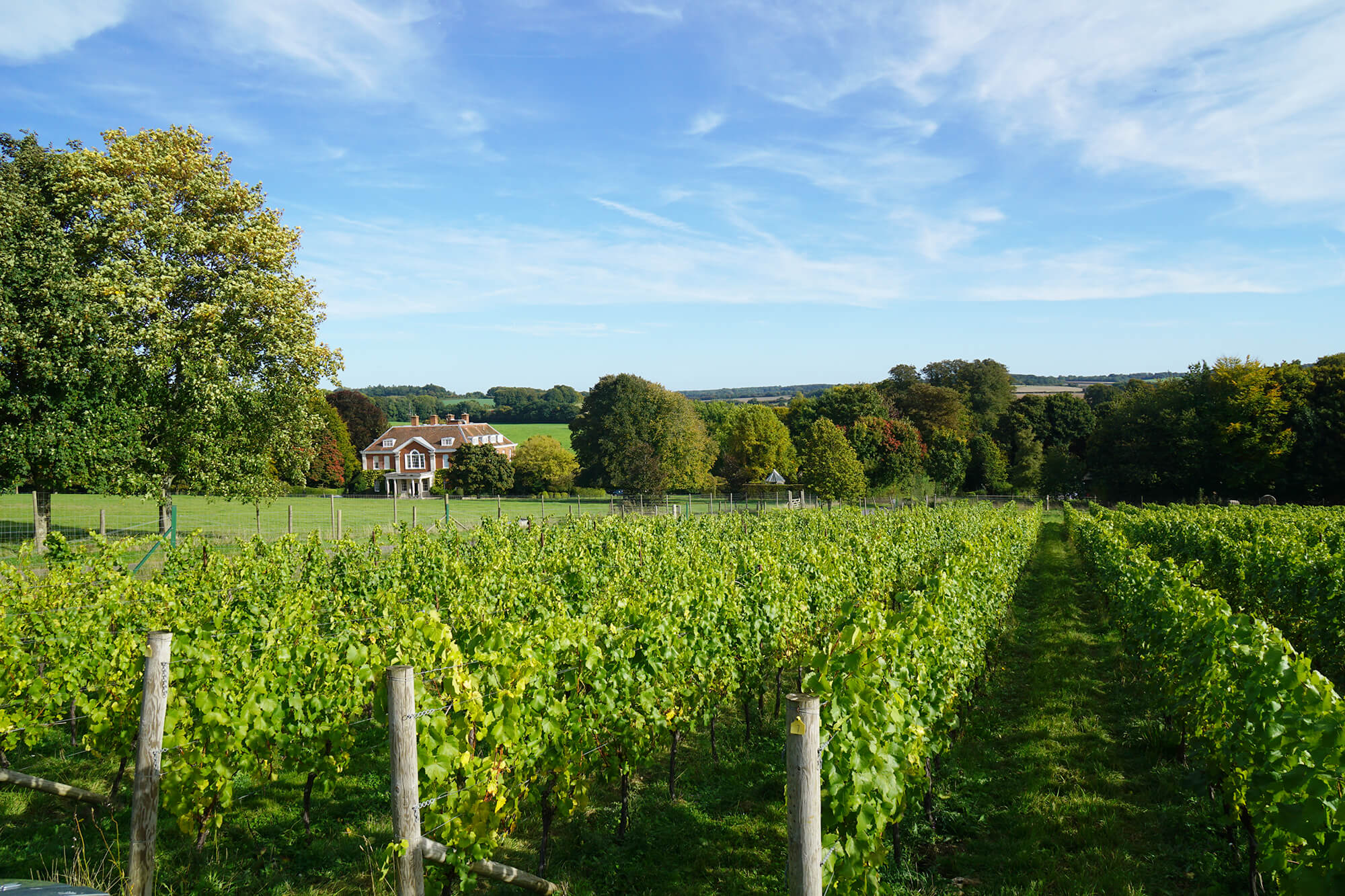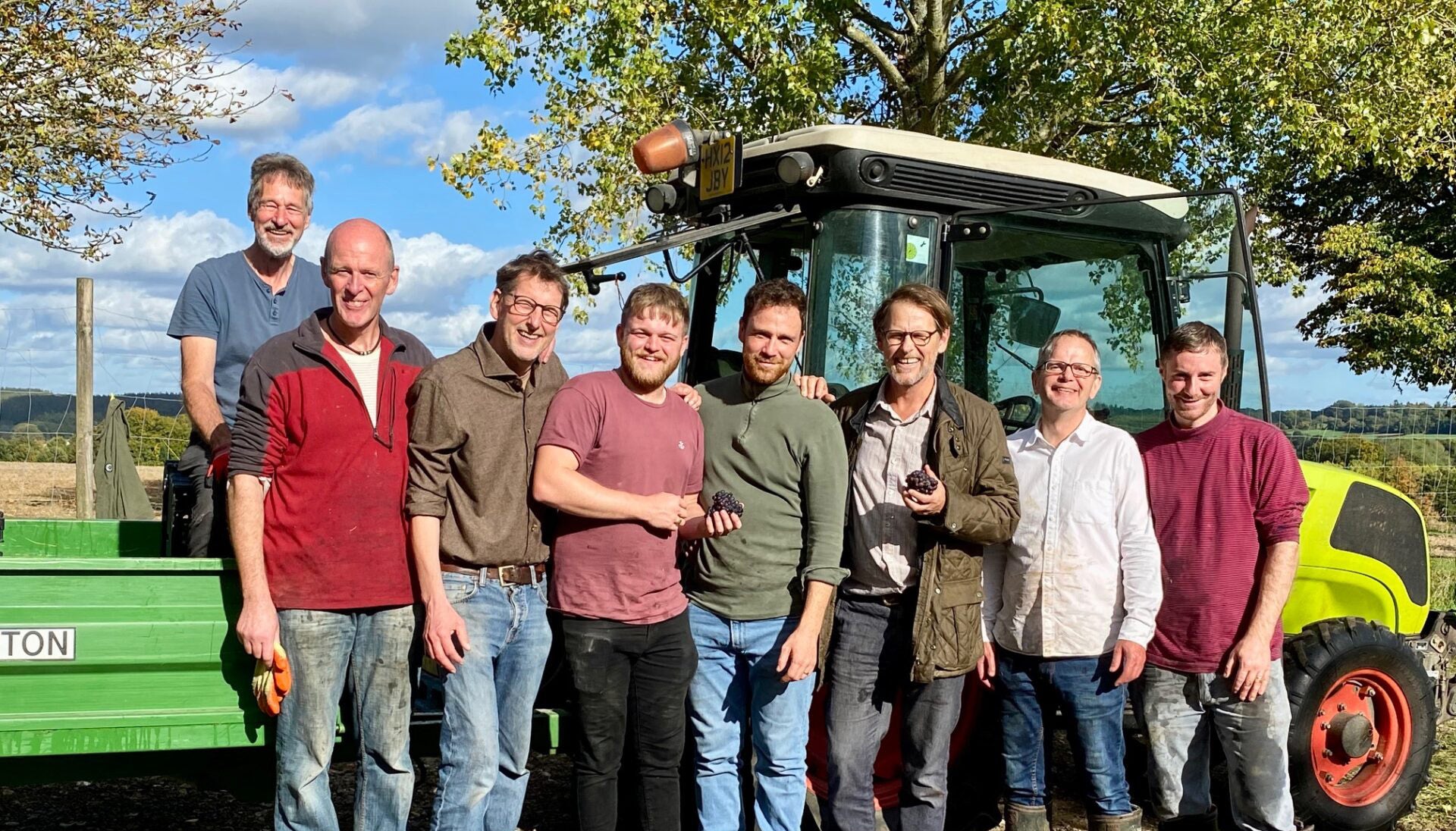
Our Story
Quietly progressive with respect for tradition
My father, John Sainsbury’s dreams of owning a vineyard and making his own sparkling wine started back in the 1980s when, as CEO of Sainsbury’s, he would regularly tour the vineyards of Champagne. It was there that he first met Hervé Jestin, at the time a young, pioneering winemaker making a name for himself. It was not until 2012 however, and well into his retirement, that my father finally fulfilled that dream and, in partnership with my brother Julian and me, planted five hectares of vines on our family estate in Hampshire’s Candover Valley. It felt entirely fitting that our consultant winemaker should be Hervé Jestin, by now one the world's most respected sparkling winemakers, known for his relentless focus on quality and innovation, his refined wines and his non-interventionist and biodynamic approach.
Candover Brook is named after the chalk stream that runs through our valley, chalk streams are almost uniquely English and our chalk soil is the key defining element of our vineyard’s topography. The Candover Brook is one of the few remaining habitats of the rare English white-clawed crayfish. Both the brook and its crayfish are celebrated in the design of our label.
My brother and I now run the vineyard and the farm that surrounds it according to regenerative principles. We are pictured above with our mother, Lady Anya Sainsbury.
Mark Sainsbury 2023

The Vineyard
A natural balance
The vineyard is comprised of five hectares of Chardonnay, Pinot Noir and Pinot Meunier, a mixture of Burgundy and Champagne clones especially suited to the soil and climate. The vines are planted on a south-facing slope on silty clay loam soils with a free-draining chalk subsoil, providing the ideal ripening conditions. The vines are double-guyot pruned to attain the right balance between vigour and maturity. The estate has long championed sustainable and regenerative agricultural practices and is a founding member of the Sustainable Wines of Great Britain programme. Meadow grasses and clovers are interplanted between the vines and sheep graze the site in spring and winter to keep the grass low and promote soil fertility. We strive for a natural balance and a rich soil biodiversity, both of which are reflected in the subtle qualities of our wine.
Our Winemaking
Reflecting the character of the land
In order to obtain irreproachable quality, we hand-harvest only the best bunches of grapes. In the winery, we rely on many biodynamic techniques while respecting the traditional champenoise methods. Whole bunches are pressed and vinified in temperature-controlled stainless steel tanks to retain their youthful fruit character. The wine undergoes 100% malolactic fermentation and we bottle late, extending tank age to maximise the benefit from autolysis following the primary fermentation. Base wines are blended with reserve wines from a solera dating back to 2011 to increase consistency and aromatic complexity. After bottling, the wines are aged on lees for a minimum of 36 months for our brut and 27 months for our rosé.

Our Team
A shared love of winemaking
The success of Candover Brook is in large part due to the wonderful team who care for the land, tend to our vines and hand pick the grapes. Some, like Samuel Philippot our vineyard manager, have grown up around wine. Samuel was born in the Languedoc region of France, surrounded by vineyards. He studied agronomy, viticulture and oenology in the South of France before embarking on a career devoted to the craft. Others have developed a love of winemaking through working with us at Preston where, at peak times, up to sixty people are employed on the land. Our hope is that more of the local community will become involved in the work of the vineyard, so if you live locally and might be keen to work with us, do get in touch at office@candoverbrook.co.uk.
